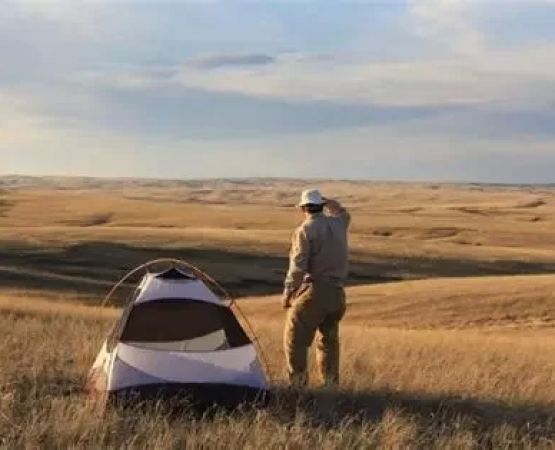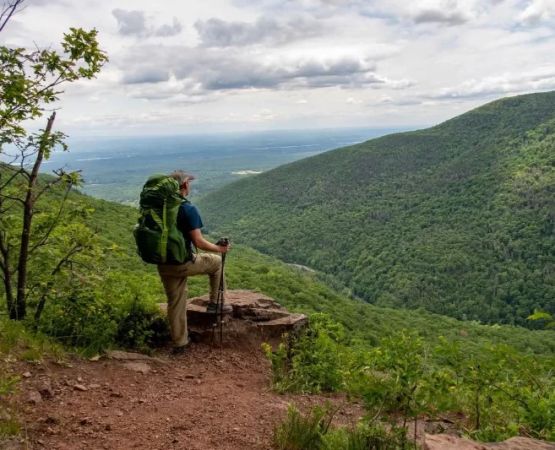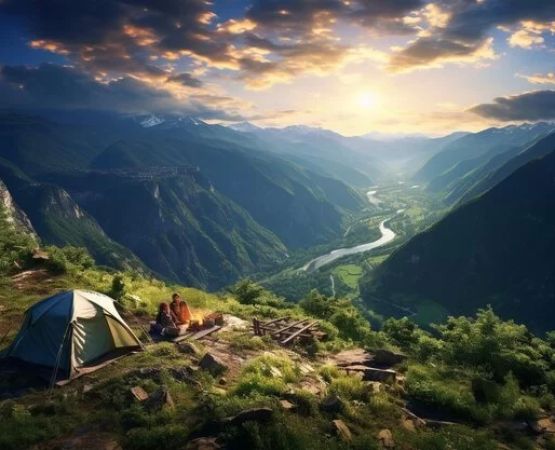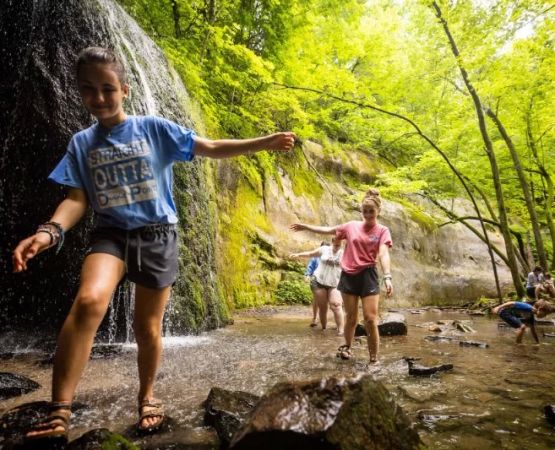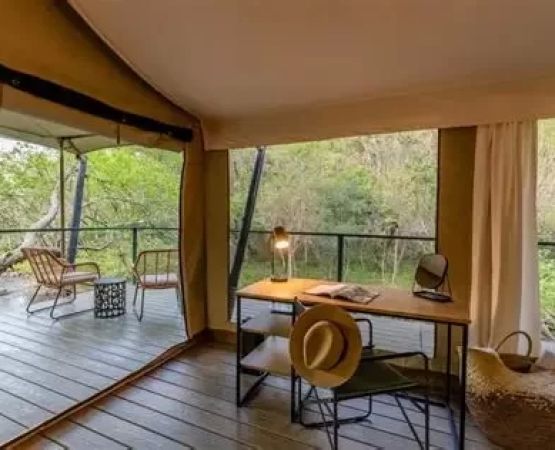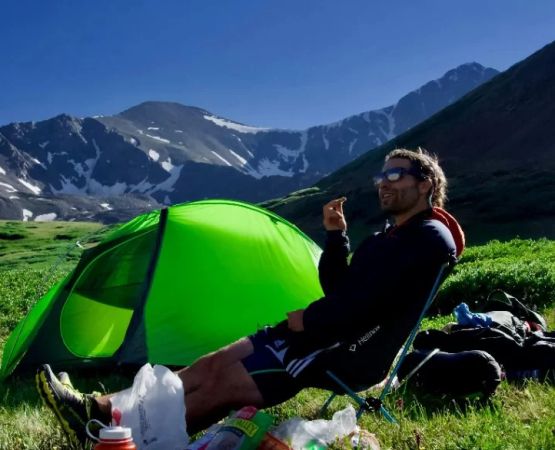- choosing-the-perfect-waterfall-campsite
- essential-gear-for-waterfall-camping
- safety-tips-for-camping-near-waterfalls
- making-the-most-of-your-waterfall-camping-experience
- eco-friendly-practices-for-nature-lovers
- plan-your-next-adventure-with-pine-cliff-resort
1. Choosing the Perfect Waterfall Campsite
When planning how to camp near waterfalls, the first step is choosing the right location. The perfect campsite offers a balance between scenic beauty, safety, and accessibility. While it’s tempting to pitch your tent right beside the rushing water, it’s wiser to stay at least 200 feet away to avoid flooding and mist that can dampen your gear overnight.
Many national and state parks across the U.S. offer dedicated areas for waterfall camping. Locations like Oregon’s Silver Falls State Park or North Carolina’s Dupont State Forest are favorites among outdoor enthusiasts. They provide trails that lead to breathtaking falls while ensuring safe camping zones nearby. Always check local regulations—some parks may restrict camping too close to waterfalls for environmental protection.
2. Essential Gear for Waterfall Camping
Be prepared for wet and wild conditions
Camping near waterfalls is thrilling, but it comes with unique challenges. Moisture, mist, and slippery terrain mean you’ll need the right equipment to stay comfortable and safe. Here’s what seasoned campers recommend:
• A waterproof tent with a sturdy rainfly and sealed seams.
• Quick-dry clothing and water-resistant hiking boots.
• A microfiber towel for drying off after exploring the falls.
• Non-slip footwear for walking near wet rocks.
• A tarp or groundsheet to keep your campsite dry.
Bringing proper gear not only enhances your comfort but also helps protect your belongings. Nothing ruins a night under the stars faster than damp sleeping bags or muddy clothes. If you’re unsure which gear fits your needs best, Pine Cliff Resort offers curated camping kits designed specifically for waterfall and riverside adventures.
3. Safety Tips for Camping near Waterfalls
Respect the power of nature
One of the most important aspects of how to camp near waterfalls is understanding safety. Waterfalls are mesmerizing but can be unpredictable. Heavy rainfall upstream may cause sudden surges, even when the weather seems calm where you are. Always check local weather forecasts and observe posted warnings before setting up camp.
Stay on marked trails and avoid climbing rocks near the edge of waterfalls—slippery moss and fast-moving water are a dangerous combination. When swimming, keep a safe distance from the base of the falls; currents can be deceptively strong. And remember, if the ground begins to feel unstable or muddy after rain, it’s best to move your tent to higher ground.
Many campers have learned these lessons the hard way. A well-documented case in 2020 involved hikers in Yosemite who underestimated the flow near Vernal Fall; their experience serves as a vital reminder to always prioritize safety over scenery.
4. Making the Most of Your Waterfall Camping Experience
From sunrise mist to starlit nights
Beyond the logistics, camping near waterfalls is about the experience—the sound of cascading water at dawn, the fresh mist cooling your face, and the connection to nature’s rhythm. To make your trip unforgettable, plan your stay around golden hours. Early mornings and late afternoons offer the best lighting for photography and fewer crowds.
Bring a journal, a hammock, or even a portable watercolor set to capture the magic of your surroundings. For couples, waterfall camping can be incredibly romantic; for families, it’s an adventurous way to teach kids about nature’s beauty and respect for the environment.
Many campers describe their first night beside a waterfall as “the best sleep of their life.” The white noise effect of the rushing water creates a naturally calming atmosphere, perfect for relaxation after a long hike.
5. Eco-Friendly Practices for Nature Lovers
Leave no trace behind
With natural beauty comes responsibility. When learning how to camp near waterfalls, adopting eco-friendly habits ensures that these pristine environments remain for future generations. Follow the “Leave No Trace” principles: pack out all trash, use biodegradable soap, and avoid contaminating nearby water sources.
If campfires are permitted, build them using designated pits and always extinguish them completely. Avoid using firewood from outside the area, as it can introduce invasive pests. Consider switching to portable camp stoves for cooking—cleaner, faster, and safer near moisture-heavy areas.
At Pine Cliff Resort, we actively promote sustainable outdoor recreation. Our guides educate guests on environmental responsibility, ensuring every adventure leaves the wilderness as beautiful as they found it.
6. Plan Your Next Adventure with Pine Cliff Resort
Where nature meets comfort
Whether you’re a seasoned explorer or a first-time camper, knowing how to camp near waterfalls transforms a simple getaway into an unforgettable experience. The key is preparation, respect for nature, and a sense of wonder. At Pine Cliff Resort, we help adventurers plan their trips with expert advice, premium gear, and access to some of the most breathtaking waterfall camping locations in the country.
Imagine waking up to the soft roar of a nearby waterfall, brewing your morning coffee as sunlight filters through the mist, and spending the day immersed in pure natural serenity. That’s what awaits you when you camp the right way — responsibly, safely, and with a touch of adventure.
Your perfect waterfall camping trip starts with a plan — and we’re here to make it extraordinary.

